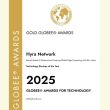NEW YORK CITY — Clarity AI, the leading global sustainability tech platform, announced today that it believes the positive viral attention Patagonia received last week and the negative viral attention H&M and other fast-fashion brands received over the past few months is clouding the picture of what can actually save the planet.
A few days ago, Yvon Chouinard – the Chairman of Patagonia – announced that he will be donating the entire company, worth $3 billion, to fight climate change. Social networks were on fire sharing the news and supporting Chouinard – CEOs, fashion models, and millions of consumers. The story went viral. Another viral story from earlier this summer is related to fast-fashion giant H&M. It is facing a class-action lawsuit, brought by a student at SUNY New Paltz, for using misleading sustainability claims and for employing the fast-fashion business model while working to be more sustainable.
Around the same time, regulators in Europe bore down on the use of inaccurate data or misleading claims. The Norwegian Consumer Authority (NCA) concluded that H&M’s usage of sustainability data was non-compliant. Then, the UK’s Competitions and Markets Authority opened an investigation to scrutinize the sustainability claims made by 3 brands – ASOS, Boohoo, and Walmart-owned George at Asda. The Netherlands’ Authority for Consumer Markets (ACM) followed and put H&M and Decathlon, the largest sporting goods retailer in the world, under investigation for using misleading “green” claims. And considering 60% of the top 20 fashion conglomerates by market cap have similar sustainability claims, Clarity AI believes this is just the beginning of whitewashing the green out of fashion.
“A very large fast-fashion company can have a globally-sized impact on sustainability. And, in terms of size, H&M is 1.5% of the fashion industry and is more than 15 times bigger than Patagonia,” notes Rebeca Minguela, Founder & CEO, of Clarity AI. “Yes, the fast-fashion model, which is approximately 10% of the fashion industry, generates waste and fuels consumerism, but it is not acceptable to say the entire industry cannot push to be more sustainable or that it is solely to blame for the planet’s woes.”
How does H&M’s size relate to carbon emissions and potential emissions reduction? When looking at the intensity of carbon emissions (CO2 per dollar of revenue), Patagonia performs more than twice as well as H&M. H&M has committed to get to that intensity level by 2030, and it is on track so far. Should it achieve its goal, H&M will be at almost exactly the same level of carbon emissions intensity that Patagonia is today. That would mean that H&M would successfully reduce 56% of their emissions, which is the same as 8 million flights from London to NYC or 21 times Patagonia’s yearly emissions.
“The reality is that advanced technology models actually allow us to improve the data displayed on those labels,” added Ms. Minguela. “We can measure more, and better. We should encourage H&M and the rest of the fashion industry – the other 98.5% – to add those improved sustainability labels and for consumers to use that information.”










